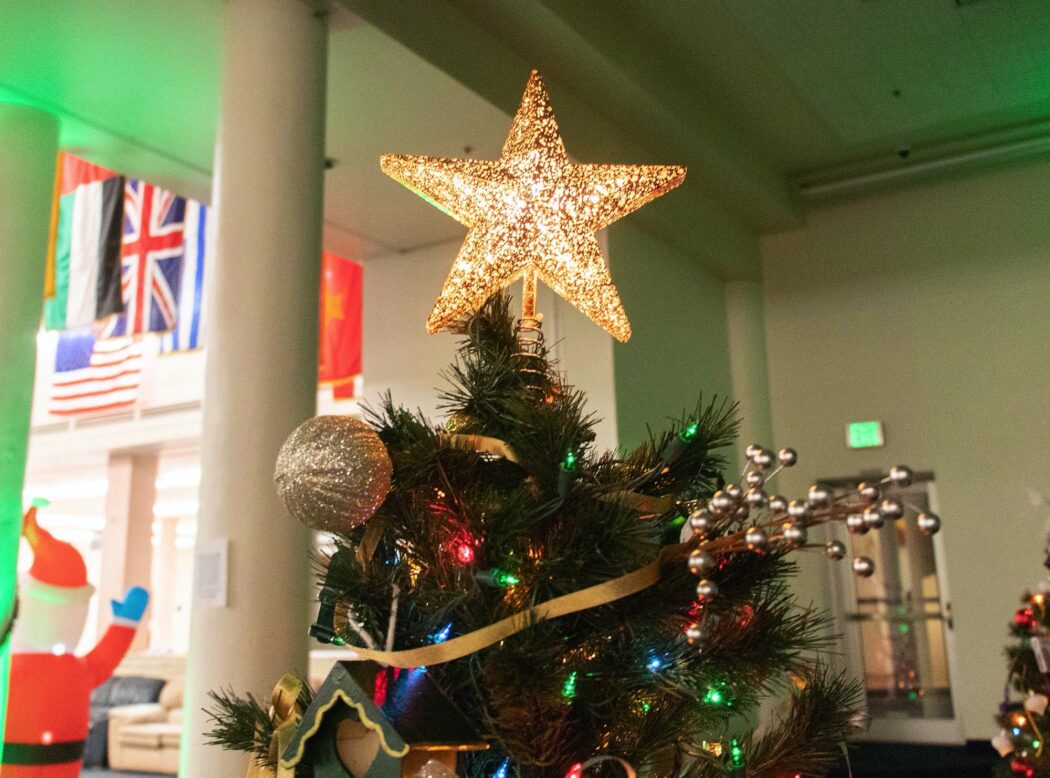The Christmas debate: Real vs. fake trees
With snow finally landing in Logan as we start Christmas break, many Aggies have already set up their Christmas trees in preparation for the holiday season.
While it hasn’t been long since we recovered from the awkward Thanksgiving dinner political debates with Ol’ Uncle Rick, another festive feud is in the air — fake or real trees?
Despite the Christmas tree’s close tie to the Dec. 25 holiday, it hasn’t always been like that. According to the History Channel, as early as the Ancient Egyptians and Romans, evergreen plants and trees were erected during the winter as a symbol of hope to their respective sun gods.
The idea was that as shorter days and longer nights came around the winter season, this meant that the sun god was ill and these evergreen plants were a reminder for the sun god of how beautiful the longer days made the earth.
The article continued to explain that the winter solstice, falling just a few days before Christmas every year, was celebrated by these people when the sun god began its recovery as days began to get longer.
The article also gave a timeline as to how the tradition moved forward, and spread throughout western Europe, eventually being widely adopted by the Germans.
The Germans also began decorating the trees with wreaths and lights, but this practice was deeply frowned upon by the American pilgrim population as ritualistic and a pagan mockery of the Christian holiday.
It wasn’t until the early 19th century when a large influx of Irish and German immigrants flooded the U.S. that the tradition became widespread and well-embraced by the general population.
The tradition has continued to grow in America without question or hesitation, but as technology has developed and tree shortages have worsened, more and more Americans have turned to artificial trees.
Invented in the late 19th century and built with goose feathers and wire, the new artificial trees aimed to address the growing problem of deforestation and the toil of having to buy and keep up a live tree every year.
While invented almost 150 years ago, the artificial tree wasn’t widely adopted until the 1980’s after significant development in materials and structure and a cyclical bout of popularity, according to Dambly’s Garden Center.
Believe it or not, the first big acceptance of fake trees was the advent of the aluminum cone-like trees in the 1960’s, but this quickly changed after the release of the 1965 Charlie Brown Christmas Special.
While fake trees are able to offer their pitch of convenience and financial conservation, study after study shows that their cost on the environment may not be worth the extra few bucks, according to The Nature Conservancy.
Even though fake trees preserve forests from deforestation and only require one purchase for years of festivities, it turns out that their cost in carbon far outweighs the cost of cutting down a few real pines.
Especially with recently doubled efforts to regrow the global tree population, the 30 million trees harvested for Christmas every year in the U.S. barely makes a dent in the 500 million tree population across farms in the U.S.
Comparatively, only 10 million fake trees are purchased in the U.S. each year, but most of these – nearly 90% – originate in China, significantly adding to the overall carbon output in the supply chain of Christmas spirit.
Regardless of history, traditions are traditions, and some Aggies’ Christmas traditions are deeply rooted in the type of tree they use each year.
Gentry Mower, a senior at USU, said, “Every year after Thanksgiving, the kids gather around with their shoe boxes full of their homemade ornaments to put on the tree. We always have a great time decorating our very nice but very fake Christmas tree.”
Another senior, Lexi Sutton, countered Mower when she said, “My family normally gets a real Christmas tree because we like being able to pick out the tree with everyone – parents and siblings – all at home. Picking out and decorating a tree with my whole family is something I’ve always looked forward to and is my favorite Christmas tradition.”
Even though these students enjoy their own traditions, they also understand the other side of the argument.
When asked about her desire to continue this tradition with her future family, Mower said, “I wish we would’ve gotten a real tree. We grew up in Arizona, so we couldn’t get a real tree. In the future, though, I want my own family to have a real tree because I think it’s a cool tradition and one I want to adopt.”
On a similar note, Sutton added to her comment, saying, “I don’t have anything against fake trees, especially since putting lights on a real tree can be a real pain compared to the convenience of pre-lit fake trees. This year, we actually got a fake tree since we’ll be out of town and can’t take care of a real one.”
Much like everything else in this world, there are pros and cons to both sides, and just like Thanksgiving politics, one meal, or rather one article, won’t be enough to settle the debate.
Regardless of a tree’s authenticity, it still brings people together to feel the holiday spirit.
-Michael.Popa@usu.edu

